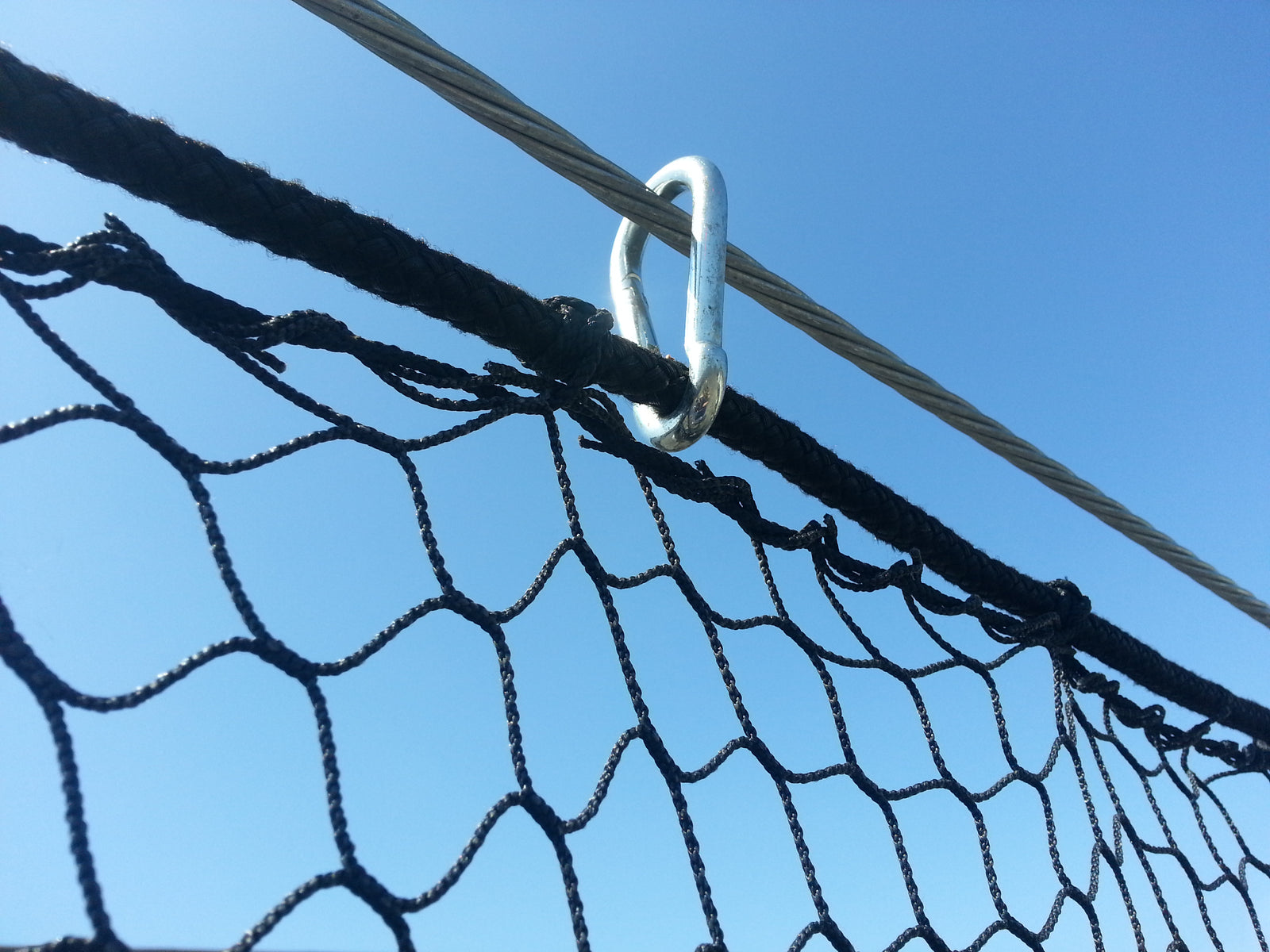A Comprehensive Guide for Sport and Industrial Applications
When it comes to choosing the right material for your sports and industrial netting needs, understanding the key differences between high-density polyethylene (HDPE) and polypropylene (PP) is essential. Both are popular thermoplastic polymers with diverse applications, but they differ significantly in their chemical structure, density, mechanical properties, and areas of use. Here's a detailed comparison to help you make an informed decision.
Chemical Structure
- HDPE: Composed of long chains of ethylene monomers, HDPE is derived from petroleum. This structure gives HDPE a high strength-to-density ratio, making it exceptionally durable and versatile—perfect for both sports and industrial uses.
- PP: Made from propylene monomers, polypropylene features a simpler chemical structure than HDPE. It is renowned for its flexibility and superior fatigue resistance, making it ideal for applications requiring repeated stress, such as in textiles and packaging.
Density
- HDPE: High-density polyethylene has a higher density, typically ranging between 0.93 to 0.97 g/cm³. This density contributes to HDPE's strength and rigidity, making it ideal for robust applications like baseball netting, golf netting and high-impact industrial netting applications.
- PP: Polypropylene possesses a lower density than HDPE, usually between 0.89 to 0.91 g/cm³. Despite being lighter, PP maintains robust mechanical characteristics suitable for various applications but lacks the same level of stiffness and strength as HDPE, making it an inferior choice for sports netting materials.
Mechanical Properties
- HDPE: Known for its high tensile strength, impact resistance, and stiffness, HDPE can withstand a broad range of temperatures and harsh conditions, making it an incredibly tough material. These properties are vital for netting in sports facilities, baseball and softball batting cages, and golf driving ranges, where durability and strength are non-negotiable.
- PP: Although less rigid than HDPE, PP offers good flexibility and fatigue resistance, making it suitable for applications with continuous movement or bending. However, this flexibility comes at the expense of the strength required for high-impact sports netting.
Chemical Resistance
- HDPE: Exhibits excellent chemical resistance, particularly against many acids and alcohols. This property is crucial for industrial netting, where exposure to chemicals is frequent. Whether in the harsh conditions of a chemical processing plant or an outdoor sports facility, HDPE's resilience ensures longevity and effectiveness.
- PP: Also demonstrates exceptional chemical resistance, performing well against acids and bases. It is commonly used in chemical processing facilities and laboratory equipment. However, its overall chemical resistance does not match that of HDPE, especially in prolonged exposure scenarios. PP is vulnerable to attack by chlorinated solvents and aromatic compounds, which can compromise its integrity.
UV Resistance
UV resistance is a critical factor when determining the longevity and performance of netting solutions, particularly in outdoor settings where exposure to the sun's ultraviolet rays is inevitable.
- HDPE: High-density polyethylene excels in UV resistance, making it particularly suitable for outdoor applications. At LFS Sports & Industrial Netting, we typically use black HDPE to enhance UV resistance and ensure that our netting remains robust and effective over extended periods, even under direct sunlight. This makes HDPE the perfect choice for outdoor sports netting and outdoor industrial netting materials.
- PP: While polypropylene also offers a degree of UV resistance, it falls short compared to HDPE. Over time, prolonged exposure to UV radiation can cause PP to degrade more rapidly, leading to reduced strength and flexibility. This can be a critical disadvantage for netting applications that demand prolonged outdoor use. Therefore, PP may require additional UV stabilizers to achieve comparable performance to HDPE in outdoor environments.
Applications
- HDPE: Frequently employed in the production of plastic bottles, pipes, geomembranes, and various containers, HDPE is also extensively used in toys, furniture, and packaging due to its durability and strength. In sports applications, HDPE's flexibility and toughness make it a “best-value" material for both indoor and outdoor sporting applications.
- PP: Utilized in a broad spectrum of applications, including packaging, textiles, automotive components, medical devices, and consumer products such as food containers and dishwasher-safe items. While versatile, PP does not meet the rigorous demands required for high-impact and high-performance sports netting.
Why HDPE is the Superior Choice for Sports & Industrial Netting
Given these key differences, it is evident why HDPE stands out as the preferred material for netting applications in both sports and industrial settings. Its exceptional strength, superior UV resistance, and robust chemical resilience ensure that our netting solutions stand the test of time, offering unparalleled performance.
For sports applications, HDPE provides the necessary flexibility and durability required for batting and softball cage netting, golf netting, and utility netting. For those looking for an economical solution without sacrificing the quality and durability essential for sports netting, LFS Sports & Industrial’s #30 and #42 HDPE netting featured in our prefabricated batting cages provide outstanding value. These options strike a great balance between affordability and performance, ensuring that you have robust and effective netting for a range of sports applications. Whether you're installing a batting cage in your backyard, or equipping a community sports facility, #30 and #42 HDPE netting offer reliable performance and resilience. Learn more about our use of HDPE in our netting here.
For athletes and facilities demanding the highest level of performance and durability, we also offer an elevated option with our #36 Nylon netting tailored for professional use and collegiate sports stadiums. Our premium nylon netting material excels in strength, flexibility, and longevity compared to both HDPE and PP options.
Ready to enhance your netting solutions? Contact our experts for personalized recommendations and discover the best options tailored to your specific needs.

